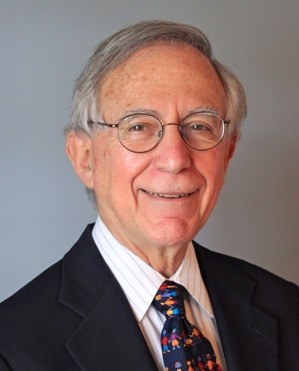User login
Dr. James Perrin, who will take office as the American Academy of Pediatrics’ president in January, said he has three main goals for his term: Make sure health reform works for children and pediatricians; continue pediatric practice transformation efforts; and capitalize on diversity in the pediatric workforce.
Dr. Perrin, professor of pediatrics at Harvard Medical School and head of the division of general pediatrics at the Massachusetts General Hospital, both in Boston, was chosen as AAP president-elect in October. He said in an interview that these efforts all can help pediatricians care for children, especially children with chronic conditions such as asthma, mental health conditions, developmental disorders, and obesity.
"There’s a belief that chronic disease isn’t all that common in children, but we have lots and lots of children in practices that have chronic health conditions," he said. Moving toward a team care approach, as is advocated in both the Affordable Care Act and in practice transformation efforts championed by the AAP, can help take care of those children.
"To take care of the child with autism takes two times the amount of time of a child without autism," he said, adding that for practices to care appropriately for children with complex needs requires changes in the current payment system. In addition, Dr. Perrin noted that the pediatric workforce has become substantially more diverse, both in terms of race and in terms of gender. He said one of his goals is to enable mentoring programs, especially among women and minorities, that can help bring those pediatricians into leadership roles.
Dr. James Perrin, who will take office as the American Academy of Pediatrics’ president in January, said he has three main goals for his term: Make sure health reform works for children and pediatricians; continue pediatric practice transformation efforts; and capitalize on diversity in the pediatric workforce.
Dr. Perrin, professor of pediatrics at Harvard Medical School and head of the division of general pediatrics at the Massachusetts General Hospital, both in Boston, was chosen as AAP president-elect in October. He said in an interview that these efforts all can help pediatricians care for children, especially children with chronic conditions such as asthma, mental health conditions, developmental disorders, and obesity.
"There’s a belief that chronic disease isn’t all that common in children, but we have lots and lots of children in practices that have chronic health conditions," he said. Moving toward a team care approach, as is advocated in both the Affordable Care Act and in practice transformation efforts championed by the AAP, can help take care of those children.
"To take care of the child with autism takes two times the amount of time of a child without autism," he said, adding that for practices to care appropriately for children with complex needs requires changes in the current payment system. In addition, Dr. Perrin noted that the pediatric workforce has become substantially more diverse, both in terms of race and in terms of gender. He said one of his goals is to enable mentoring programs, especially among women and minorities, that can help bring those pediatricians into leadership roles.
Dr. James Perrin, who will take office as the American Academy of Pediatrics’ president in January, said he has three main goals for his term: Make sure health reform works for children and pediatricians; continue pediatric practice transformation efforts; and capitalize on diversity in the pediatric workforce.
Dr. Perrin, professor of pediatrics at Harvard Medical School and head of the division of general pediatrics at the Massachusetts General Hospital, both in Boston, was chosen as AAP president-elect in October. He said in an interview that these efforts all can help pediatricians care for children, especially children with chronic conditions such as asthma, mental health conditions, developmental disorders, and obesity.
"There’s a belief that chronic disease isn’t all that common in children, but we have lots and lots of children in practices that have chronic health conditions," he said. Moving toward a team care approach, as is advocated in both the Affordable Care Act and in practice transformation efforts championed by the AAP, can help take care of those children.
"To take care of the child with autism takes two times the amount of time of a child without autism," he said, adding that for practices to care appropriately for children with complex needs requires changes in the current payment system. In addition, Dr. Perrin noted that the pediatric workforce has become substantially more diverse, both in terms of race and in terms of gender. He said one of his goals is to enable mentoring programs, especially among women and minorities, that can help bring those pediatricians into leadership roles.

